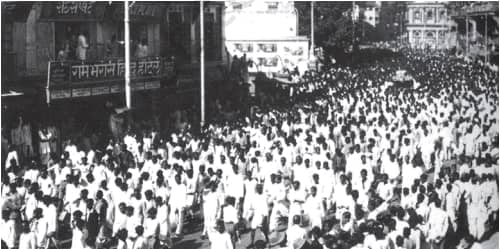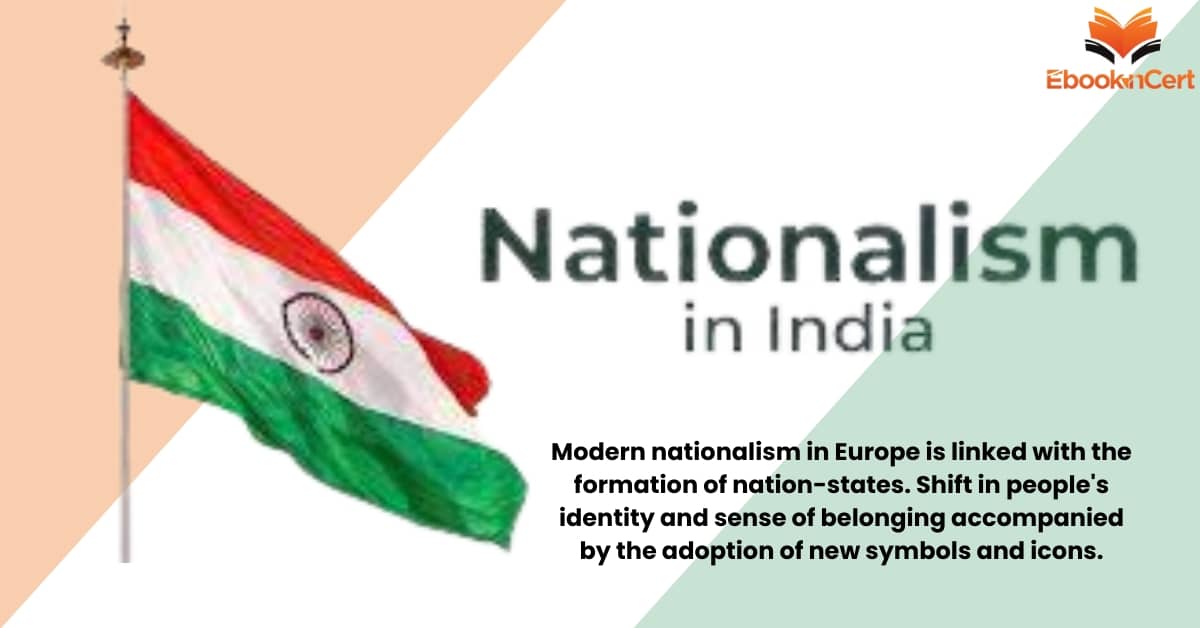NCERT Social Science For Class 10th History Chapter 2nd Notes & Concept- Nationalism In India Notes For Class 10
Welcome to our comprehensive guide on NCERT History for class 10 chapter 2 Nationalism In India. Read this blog on NCERT History chapter 2 “Nationalism in India for Class 10th”. In this chapter, we will learn and also get free Nationalism In India Notes For Class 10. Learn about Nationalism in India that started in the 1920s and related topics from chapters like Introduction To Nationalism In India, The First World War, Khilafat and Non-Cooperation, Differing Strands within the Movement, Towards Civil Disobedience, The Sense of Collective Belonging.
In this blog, you will understand the concept of class 10th history chapter 2 Nationalism In India. This chapter has a good significance in the board exams and is important for board exam preparation. After reading this NCERT Social Science History Chapter 2 students, teachers or any exam preparation students will get the best knowledge on History Chapter 2 Nationalism in India and on related topics.
We give you the chapter in the form of pointers and topic-wise so that you can learn fast and quickly. It will help you to remember NCERT Social Science History chapter 2 with the help of class 10th history chapter 2 notes for free. Also, our notes of class 10th History Chapter 2 help in revision before the exam in a short time.
Our NCERT for Class 10 History chapter notes will help you with every step of preparation to score better in exams. Let’s start to learn CBSE/NCERT Class 10 History Chapter 2 Concepts. These notes are detailed and more than enough for exam preparation. and you can download the Nationalism in India class 10th notes pdf for free.
Topic Covered in this NCERT History Chapter 2 Nationalism in India for Class 10
| Topics No. | Topics Name |
|---|---|
| 0 (Introduction) | Introduction To Nationalism In India |
| 1 | The First World War, Khilafat and Non-Cooperation |
| 2 | Differing Strands within the Movement |
| 3 | Towards Civil Disobedience |
| 4 | The Sense of Collective Belonging |
Download NCERT History Chapter 2 Nationalism in India Class 10th Notes PDF for Free
If you are in class 10th and looking for free NCERT History chapter 2 notes of chapter Nationalism in India class 10 that cover concepts, then From here you can download the free class 10th History chapter 2 notes “Nationalism In India”. You should download this free PDF for future test or exam preparations.
NCERT History Chapter 2 Nationalism in India Notes PDF for Class 10
Introduction to Nationalism in India
1. Association of Modern Nationalism with Nation-States:
- Modern nationalism in Europe is linked with the formation of nation-states.
- Shift in people’s identity and sense of belonging accompanied by the adoption of new symbols and icons.
2. Evolution of National Identity in Most Countries:
- The creation of a new national identity was a gradual and prolonged process.
- The emergence of a shared consciousness defines the boundaries of communities.
3. Connection between Nationalism and Anti-Colonial Movements:
- In India and other colonies, modern nationalism intertwined with the anti-colonial struggle.
- The experience of colonial oppression became a unifying factor, fostering a sense of solidarity.
4. Diversity of Experiences under Colonialism:
- Different classes and groups experienced colonialism uniquely.
- Varied notions of freedom emerged based on diverse experiences.
5. Congress Efforts under Mahatma Gandhi:
- The Congress, led by Mahatma Gandhi, aimed to unite diverse groups within the anti-colonial movement.
- Gandhi’s strategy involved forging alliances and building unity among various sections of society.
6. Challenges to Unity:
- Despite efforts for unity, conflicts emerged among different social groups.
- Diverse perspectives and interests sometimes led to tensions within the anti-colonial movement.
7. Historical Context: Growth of Nationalism till the 1920s:
- Previous knowledge about the growth of nationalism in India up to the early 20th century.
- The upcoming chapter focuses on the period from the 1920s, exploring the Non-Cooperation and Civil Disobedience Movements.
8. Non-Cooperation and Civil Disobedience Movements:
- Detailed study of the Non-Cooperation and Civil Disobedience Movements from the 1920s.
- Examination of how these movements shaped the national movement in India.
9. Congress Strategy for National Development:
- Understanding how the Congress aimed to develop the national movement in India.
- Analyzing the role of Mahatma Gandhi in steering the Congress towards a unified anti-colonial struggle.
10. Inclusivity of Different Social Groups:
- Exploration of the participation of diverse social groups in the national movement.
- Recognition of varied contributions and perspectives that enriched the anti-colonial struggle.
11. Popular Imagination and Nationalism:
- Examining how nationalism captured the imagination of the people.
- Analyzing the factors and events that contributed to the widespread adoption of nationalist ideas.
Mass processions on the streets became a common feature during the national movement.

Next & Previous Topics of The History Class 10 Chapter 2nd: Nationalism in India for Class 10th
Next History Chapters Notes
| Chapters No. | Chapters Name |
|---|---|
| Chapter 1 | The Rise of Nationalism in Europe Notes |
| Chapter 2 | Nationalism In India Notes |
| Chapter 3 | The Making of Global World Notes |
| Chapter 4 | The Age of Industrialisation Notes |
| Chapter 5 | Print Culture And The Modern World Notes |
Important Dates in NCERT History Chapter 2: Nationalism in India
- 1918-19: Distressed UP peasants organised by Baba Ramchandra.
- April 1919: Gandhian Hartal against Rowlatt Act; Jallianwala Bagh massacre.
- January 1921: Non-Cooperation and Khilafat movement launched.
- February 1922: Chauri Chaura; Gandhiji withdraws Non-Cooperation movement.
- May 1924: Alluri Sitarama Raju arrested ending a two-year armed tribal struggle.
- December 1929: Lahore Congress; Congress adopts the demand for ‘Purna Swaraj’.
- 1930: Ambedkar established the Depressed Classes Association.
- March 1930: Gandhiji begins the Civil Disobedience Movement by breaking salt law at Dandi.
- March 1931: Gandhiji ends the Civil Disobedience Movement.
- December 1931: Second Round Table Conference.
- 1932: Civil Disobedience re-launched.
New Words and Their Meaning from NCERT History For Class 10th Chapter 2nd: Nationalism in India
- Forced recruitment – A process by which the colonial state forced people to join the army.
- Boycott – The refusal to deal and associate with people, participate in activities, or buy and use things; usually a form of protest.
- Picket – A form of demonstration or protest by which people block the entrance to a shop, factory or office.
- Begar – Labour that villagers were forced to contribute without any payment.
The Independence Day Pledge, 26 January 1930:We affirm that the inherent right to freedom, the enjoyment of the benefits of one’s labour, and the essentials for a fulfilling life belong to the Indian people, as it does to any other populace. This ensures comprehensive growth opportunities. We also uphold the belief that if any government denies these rights and subjects its people to oppression, the populace holds the additional right to amend or abolish such governance.
The British Government in India not only stripped the Indian people of their freedom but also built its foundation on the exploitation of the masses, resulting in economic, political, cultural, and spiritual devastation in India. Consequently, we advocate for India to sever ties with the British and achieve Purna Swaraj, denoting Complete Independence.
Quit India Movement: The failure of the Cripps Mission and the consequences of World War II sparked widespread discontent in India. In response, Gandhiji initiated a movement advocating for the complete withdrawal of the British from India. During the Congress Working Committee meeting in Wardha on July 14, 1942, the historic ‘Quit India’ resolution was passed, urging the immediate transfer of power to Indians. On August 8, 1942, in Bombay, the All India Congress Committee endorsed the resolution, calling for a non-violent mass struggle across the nation.
It was during this event that Gandhiji delivered the renowned ‘Do or Die’ speech. The ‘Quit India’ call nearly paralyzed the state machinery in various regions, with people voluntarily joining the movement. Hartals were observed, and demonstrations and processions resonated with national songs and slogans. This mass movement involved thousands of ordinary individuals, including students, workers, and peasants, alongside leaders like Jayprakash Narayan, Aruna Asaf Ali, Ram Manohar Lohia, and notable women such as Matangini Hazra in Bengal, Kanaklata Barua in Assam, and Rama Devi in Odisha. Despite the British responding forcefully, it took over a year to suppress the movement.
FAQ on NCERT History Chapter 2 Nationalism in India
Q1. Which significant movements did Mahatma Gandhi start?
Answer: Mahatma Gandhi initiated several noteworthy movements, including:
- Satyagraha Movement
- Civil Disobedience Movement
- Salt March
- Non-cooperation Movement
- Khilafat Movement

